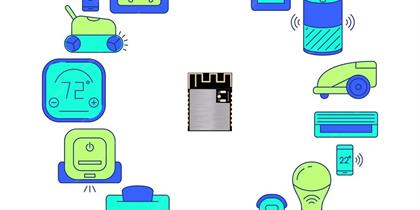
Demystifying BLE GATT: The Bedrock of Bluetooth Low Energy Communication
September 17, 2024

Central to BLE’s functionality is the BLE Generic Attribute Profile (BLE GATT), which serves as the protocol’s backbone, enabling efficient and structured data communication between devices. This article aims to provide an in-depth exploration of GATT, its components, and its role in BLE technology.
Understanding BLE GATT
BLE GATT is a protocol that operates on top of the Attribute Protocol (ATT) and is responsible for handling the exchange of information between BLE devices. It defines a standardized way of organizing data into readable formats, making it easier for devices to communicate with each other. GATT is particularly important in BLE because it allows devices to discover and understand the services and characteristics offered by other devices.
Services and Characteristics
At the heart of GATT are two key concepts: Services and Characteristics. A Service in GATT is a collection of data that represents a particular function of the device. For instance, a heart rate monitor might have a service that includes characteristics for heart rate measurement, body sensor location, and control points. Characteristics, on the other hand, are the smallest units of data within a service, representing specific values like the current heart rate or battery level.
Each characteristic has a unique identifier known as a Universally Unique Identifier (UUID), which allows devices to recognize and access them. Characteristics can be read, written, or both, depending on their properties, and they often include descriptors that provide additional information about the characteristic, such as its value range or unit of measurement.
The Role of UUIDs
UUIDs play a crucial role in GATT by providing a unique identity to services and characteristics. This ensures that data can be accurately identified and accessed, regardless of the device’s manufacturer. The Bluetooth SIG maintains a list of standardized UUIDs for commonly used services and characteristics, which promotes interoperability between different devices.
Data Transfer and Communication
Once a connection is established between two BLE devices, the GATT protocol facilitates the discovery of services and characteristics by the client device. This process involves the client device reading the attributes of the server device to identify the available services and characteristics.
After discovering the services and characteristics of interest, the client can read from or write to these characteristics to exchange data with the server. This exchange is managed by the ATT protocol, which provides the mechanisms for attribute access and data transfer.
Security and Privacy
GATT also addresses security and privacy concerns. It includes provisions for data encryption and authentication to ensure that data transfers are secure and that only authorized devices can access certain characteristics. This is particularly important for protecting sensitive data, such as health information from fitness trackers or personal identification data.
Applications and Use Cases
GATT is the foundation for a wide range of BLE applications, from health and fitness trackers to home automation and asset tracking. Its ability to define standardized services and characteristics makes it easy for developers to create interoperable applications that can work with a variety of BLE devices.
Conclusion
The Generic Attribute Profile (GATT) is a cornerstone of BLE technology, providing a structured and efficient way to organize and exchange data between devices. Its use of services, characteristics, and UUIDs, along with its support for security and privacy, makes it a powerful tool for developers looking to create innovative wireless applications. As BLE technology continues to evolve, GATT will remain a critical component, enabling the seamless connectivity that is the hallmark of modern wireless communication.
You Might Like Also

In the quest for cleaner and healthier indoor air, Bluetooth modules have become an integral part of modern air purifiers. These compact devices enable wireless communication between the air purifier and other systems, such as smartphones or home automation networks. By integrating Bluetooth technology, air purifiers can offer a range of advanced f Read More

In the modern landscape of wireless technology, Bluetooth modules have become indispensable components, enabling a myriad of applications that enhance our daily lives. These compact devices, embedded within a wide array of products, facilitate communication and connectivity with minimal effort. This article delves into the diverse applications of B Read More

The Versatility of Bluetooth Modules: Unleashing Connectivity
In the realm of wireless communication, Bluetooth modules have emerged as the Swiss Army knife of connectivity, enabling seamless interaction between devices over short distances. These compact devices have become indispensable in a variety of applications, from consumer electronics to industrial automation. Bluetooth modules are the silent workhor Read More

Enriching the Museum Experience: The Role of Bluetooth Beacons
Bluetooth Beacons are wireless transmitters that can detect the presence of mobile devices within their vicinity. In a museum setting, beacons can be placed at various exhibits to provide a wealth of information and interactive content to visitors. As a visitor approaches an exhibit, their device can receive a signal from the beacon, triggering an Read More

Bluetooth beacon used in Indoor Positioning Systems
Bluetooth beacons have become an essential component in Indoor Positioning Systems (IPS), providing accurate location data that enhances various applications within controlled environments. In smart retail settings, beacons play a crucial role in enhancing customer experiences, optimizing store operations, and driving business insights. Read More

The role of Bluetooth beacons in RTLS
Bluetooth beacons are playing an increasingly vital role in Real-Time Locating Systems (RTLS), particularly within the context of warehouse management. These tiny, yet powerful devices, are redefining the way warehouses operate, offering a new level of efficiency and precision that is transforming inventory tracking and asset management. Read More











